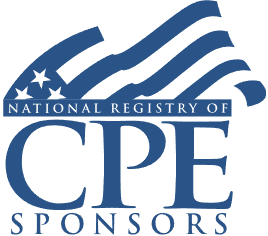Spousal Lifetime Access Trusts: Income, Gift, Estate, and GST Tax; State Limitations; Building in Powers and Options

Welcome! Strafford is now BARBRI! The expert courses you know from the trusted global leader in legal education.
Course Details
- smart_display Format
On-Demand
- signal_cellular_alt Difficulty Level
Intermediate
- work Practice Area
Estate Planning
- event Date
Tuesday, August 20, 2024
- schedule Time
1:00 p.m. ET./10:00 a.m. PT
- timer Program Length
90 minutes
-
This 90-minute webinar is eligible in most states for 1.5 CLE credits.
-
BARBRI is a NASBA CPE sponsor and this 110-minute webinar is accredited for 2.0 CPE credits.
-
Live Online
On Demand
This CLE/CPE course will guide trusts and estates counsel on leveraging spousal lifetime access trusts (SLATs) in estate planning in light of the current and ever-changing tax law. The panel will discuss critical issues concerning income, gift, estate, and GST taxes, including pitfalls to avoid. The webinar will explore SLAT basics, discuss how to design SLATs to incorporate flexibility to anticipate an ever-changing landscape, and review the best way to minimize tax liability and ensure multi-generational gifting and flexible long-term planning.
Faculty

Ms. Braverman practices in the areas of estate planning, special needs planning, asset protection, elder law and business planning.

Mr. DiPietro collaborates with families and their advisors to create customized estate plans that consider the specific needs of each family, ensuring the protection and seamless transfer of wealth. He has extensive experience in crafting estate plans tailored to the unique requirements of modern families. Mr. DiPietro a certified public accountant with two advanced degrees in taxation, has successfully implemented plans that reduce income, gift, estate, and generation-skipping transfer taxes in the context of succession planning for individuals and privately held businesses.

Mr. Frandsen is a Senior Vice President and Wealth Strategies Advisor at Bank of America Private Bank in Phoenix, Arizona. Working with clients and their advisors, he can assist with a range of strategies to help maintain and transfer client wealth. Mr. Frandsen can help clients with sophisticated planning strategies include estate tax and asset protection, business succession, change in marital status, and philanthropic giving. He works closely with Merrill Advisors to help address client concerns about locking up their assets when planning for future generations. Mr. Frandsen can offer a perspective on how clients can take advantage of certain wealth transfer and estate tax strategies that offer them some level of flexibility to access their assets, prior to their distribution to the intended beneficiaries. When appropriate, he can offer referrals to other professionals, such as attorneys or tax professionals, who can help clients execute their trust and wealth transfer strategies.
Description
The current estate tax exemption is scheduled to sunset to pre-2017 levels at the end of 2025, creating uncertainty and challenges in designing estate plans. SLATs can capitalize on current federal and state estate exemption levels in case there is a shift in the current tax regime.
A SLAT is an irrevocable trust created by one spouse for the other's benefit by using the gift tax exemption to make a gift to the SLAT, naming the other spouse as the current beneficiary. Children and grandchildren may also be named as trust beneficiaries during the spouse's lifetime but will certainly benefit after the beneficiary spouse's death. This allows limited access to the beneficiary spouse to the SLAT assets and offers flexibility for the family.
Trusts and estates counsel must have a clear understanding of critical tax issues that may arise. The estate and gift tax exemption of $13,610,000 per individual allows SLATs to be a useful lifetime tax savings tool when structured correctly. It can apply to various liquid and illiquid assets, allowing them to flow to the next generation outside of the estate tax regime.
Listen as our panel discusses critical issues and pitfalls to avoid with income, gift, estate, and GST taxes when using SLATs. The panel will explore SLAT basics, discuss how to design SLATs to incorporate flexibility to anticipate an ever-changing landscape, and the best way to minimize tax liability and ensure multi-generational gifting and flexible long-term planning.
Outline
- Considerations for the use of SLATs in estate planning
- Definition and key characteristics
- Benefits
- Potential drawbacks
- Access to SLAT assets
- Building in flexibility
- Critical tax considerations under the current tax regime
- Dual trusts (reciprocal trust doctrine)
- Funding the SLAT (including impact of joint property)
- SLATs as grantor trusts
- Divorce
- Other tax issues
- Alternative methods for multi-generational gifting and long-term planning
Benefits
The panel will review these and other key issues:
- What are the critical considerations for the use of SLATs in estate planning?
- How can you incorporate flexibility and options into your SLATs, and what are the pitfalls to avoid?
- What is the impact of joint property? What if the property is not held in the desired grantor's name?
- What tax issues arise in the use of SLATs under current tax law?
- How does a divorce impact SLATs?
- What are other methods available for multi-generational gifting and long-term planning?
NASBA Details
Learning Objectives
After completing this course, you will be able to:
- Ascertain critical tax considerations for the use of SLATs in estate planning
- Recognize the tax issues that arise in the use of SLATs under current tax law
- Understand methods available for multi-generational gifting and long-term tax planning
- Field of Study: Taxes
- Level of Knowledge: Intermediate
- Advance Preparation: None
- Teaching Method: Seminar/Lecture
- Delivery Method: Group-Internet (via computer)
- Attendance Monitoring Method: Attendance is monitored electronically via a participant's PIN and through a series of attendance verification prompts displayed throughout the program
- Prerequisite: Three years+ business or public firm experience preparing complex tax forms and schedules, supervising other preparers or accountants. Specific knowledge and understanding of estate, gift and trust taxation including various trusts types, the unified credit, and portability.

Strafford Publications, Inc. is registered with the National Association of State Boards of Accountancy (NASBA) as a sponsor of continuing professional education on the National Registry of CPE Sponsors. State boards of Accountancy have final authority on the acceptance of individual courses for CPE Credits. Complaints regarding registered sponsons may be submitted to NASBA through its website: www.nasbaregistry.org.
Unlimited access to premium CLE courses:
- Annual access
- Available live and on-demand
- Best for attorneys and legal professionals
Unlimited access to premium CPE courses.:
- Annual access
- Available live and on-demand
- Best for CPAs and tax professionals
Unlimited access to premium CLE, CPE, Professional Skills and Practice-Ready courses.:
- Annual access
- Available live and on-demand
- Best for legal, accounting, and tax professionals
Unlimited access to Professional Skills and Practice-Ready courses:
- Annual access
- Available on-demand
- Best for new attorneys
Related Courses
Recommended Resources
Building Your Book: Strategies to Secure Long-Term Success
- Business & Professional Skills
- Career Advancement
- Talent Development
